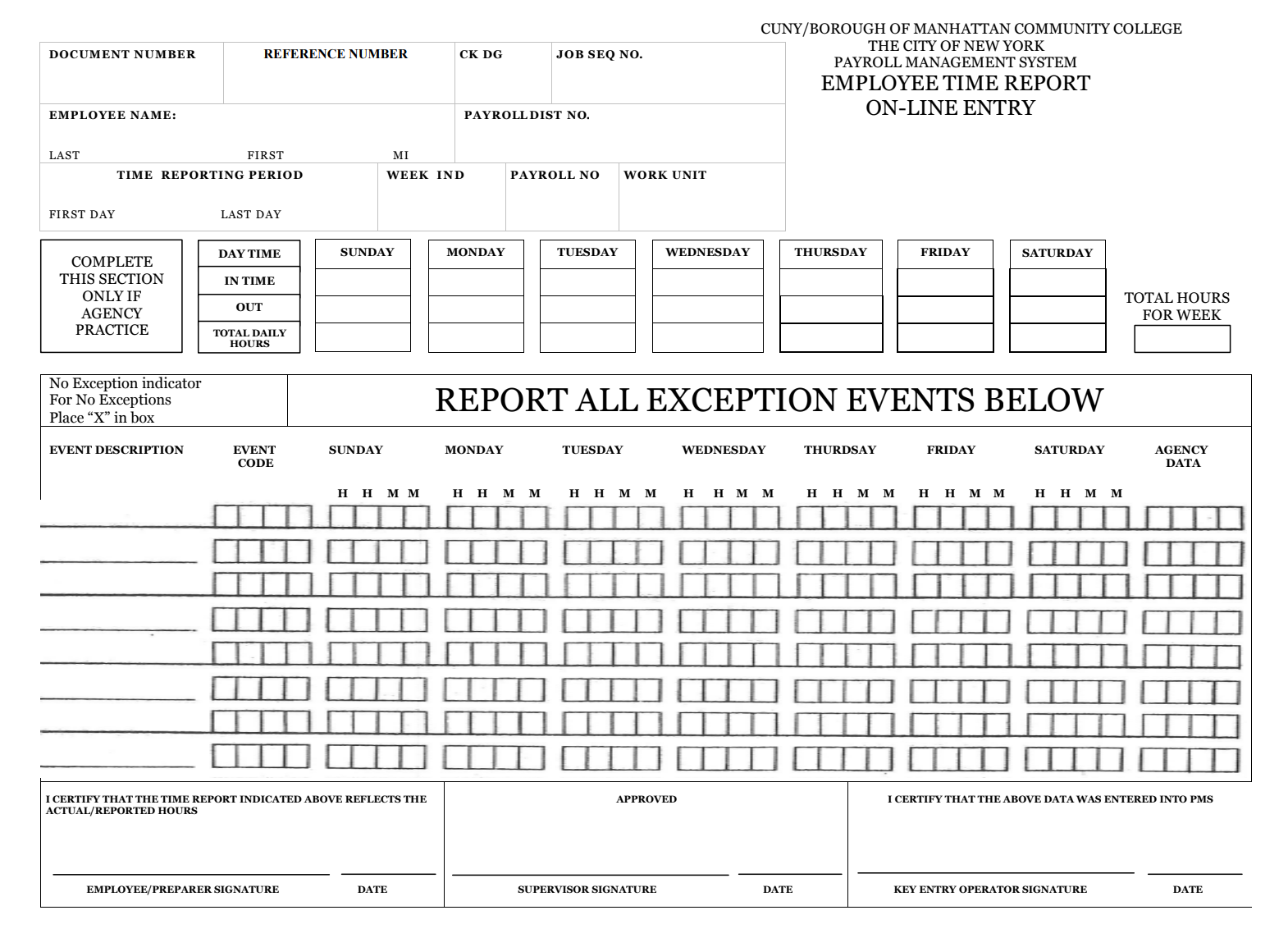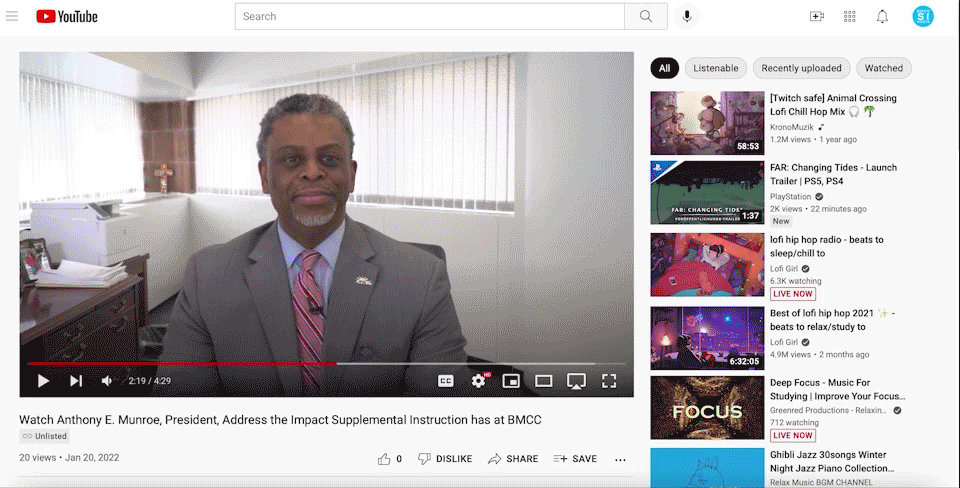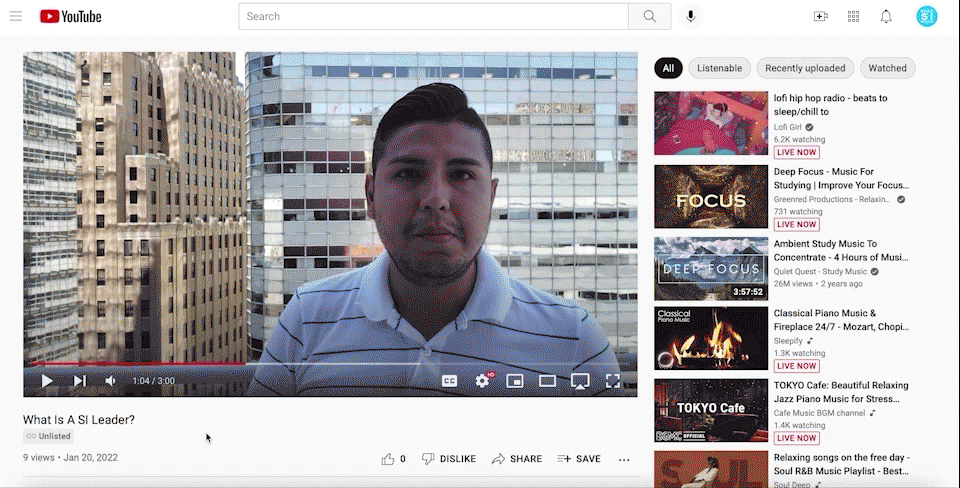Frequently Asked Questions for
Supplemental Instruction Faculty
Supplemental Instruction (SI) is a form of peer-to-peer instruction that facilitates the development of academic skills in the context of a specific course at the post-secondary level (Hurley & Gilbert, 2008); it also facilitates successful course completion. In SI, a model peer, a student or graduate who has previously been successful in the course, structures study sessions that allows students currently taking the course to learn how to study effectively (Wilcox & Jacobs, 2008). With the skills developed, these SI Leaders will build their independence as learners (Burmeister, 2013).
2. Who created Supplemental Instruction?
Supplemental instruction was researched and developed at the University of Missouri-Kansas City (UMKC) in the early 70s. Deanna Martin, then a young graduate student in reading education, was hired to work on a small, but forward thinking grant, designed to help reduce attrition among minority professional medical school students. It was Martin who coined the term Supplemental Instruction.
3. What is the history of Supplemental Instruction at BMCC?
Supplemental Instruction (SI) is a model of collaborative learning that has been used at BMCC since 2016. It is based on the original model for SI researched and developed at the University of Missouri-Kansas City (UMKC) and certified from the International Center for Supplemental Instruction. At BMCC, SI was originally used for courses that were identified as high risk rather than targeting students who are at risk of not being academically successful at the post-secondary level (Jacobs & Stone, 2008). High-risk courses have historically had at least 30% of students earning a D or F grade, or withdrawing from the course (Jacobs & Stone, 2008). SI study sessions were available to all students in the high-risk course, rather than catering only to identified at-risk students (Jacobs & Stone, 2008).
However, in recent years, SI at BMCC has broadened from its use in Pathways courses, such as Mathematics and ESL (English as a Second Language), to a wider variety of courses, such as English, Speech, Teacher Education, Music and Art, CIS (Computer Information Systems), Business, Criminal Justice, and Media Arts and Technology. As of Fall 2021, over 24,000 students have been helped by the SI program at BMCC.
4. Is Supplemental Instruction used outside BMCC?
Yes. Supplemental Instruction is used throughout the CUNY system in NYC, and at two- and four-year colleges, both public and private, throughout the United States and internationally from the U.K. to Scandinavia to Europe to South Africa. Professors here and abroad share the mission that SI helps students master course content while developing effective learning strategies and critical thinking skills, and strengthens positive study habits. Studies show that students who attend SI sessions earn statistically higher final course grades than those who do not attend (this includes students who are under-prepared when they enter the course).
5. How can BMCC faculty find out if their department uses Supplemental Instruction?
Departmental chairs and departmental SI representatives are often the first point of contact for information about SI. However, the LRC (Learning Resource Center) is another resource. Please contact your chair or Nandrani Algu, the Learning Resource Center Tutorial/SI Manager, email: nalgu@bmcc.cuny.edu. The Learning Resource Center is located in the Main Building, 199 Chambers Street, 5th Floor, Room: S-510. Phone: (212) 220-1383. For further information, please contact lrc@bmcc.cuny.edu. Two SI Coordinators are also available to assist faculty and students: Ruby Chopra rchopra@bmcc.cuny.edu and dsanchez@bmcc.cuny.edu.
6. Can both full-time professors and adjuncts become SI Faculty and use SI Leaders?
Yes. Both full-time and adjunct faculty are eligible to use a SI Leader in each of their classes.
7. Can SI Faculty use SI Leaders for in-person and online classes and in their synchronous, asynchronous and hybrid classes?
At BMCC, Supplemental Instruction has proven to be adaptable for all kinds of teaching and learning experiences, including in-person classroom instruction, on Blackboard, and in Zoom classes. Increasingly, SI Leaders work with students via email, on scheduled video calls, in breakout rooms, and by means of a wide variety of social media platforms, from group chats to Facebook to WhatsApp. SI remains highly adaptable for a variety of educational formats, such as synchronous teaching in real time, asynchronous teaching when students can learn on their own schedule within a given time frame, as well as blended learning in the classroom and online.
8. What are the responsibilities of SI Faculty?
A Professor who chooses a student to work in and out of the classroom with them is known as a Supplemental Instruction Faculty, or SI Faculty. Their student is known as a Supplemental Instruction Leader, or SI Leader. A SI Faculty mentors the SI Leader, leading by example. SI Faculty serve as guides for their SI Leaders, both modeling behavior and creating and monitoring the role of SI Leaders working with students in and outside the classroom. The specific use of the SI Leader in and out of the classroom is up to each individual SI Faculty, but often includes the following areas:
- Before the semester begins, SI Faculty and the selected SI leader review the syllabus and schedule for the course.
- Working together, SI Faculty and their SI Leader create a roster of duties for the SI leaders to perform during class hours each week, such as the review of difficult areas of the subject matter.
- SI Faculty often allows class discussion time for the SI Leader to explain their strategy for success in solving a particular academic problem in that same class when they were a student.
- SI Faculty also help SI Leaders arrange for outside class activities, such as review for quizzes and meeting with students one-on-one, particularly students who are new to BMCC, to make them feel welcome and orient them to a college environment.
- SI Faculty help SI Leaders set up weekly ‘office hours’ in-person in a designated departmental space, on video calls like Zoom or on social media.
- Some SI Faculty ask their SI Leaders to keep a log of activities the SI leader performs with students each week.
- Performance review of SI Leaders by SI Faculty is often done informally at the middle and end of the semester.
9. What are the responsibilities of SI Leaders?
A Supplemental Instruction (SI) Leader is first and foremost a student advocate working directly with students under the supervision of the Professor, both in and out of the classroom and on social media to promote student success, increase attendance and model what it is to be a great student. By working directly with students, SI Leaders also provide early intervention, time management advice and assistance on specific assignments. The SI Faculty is responsible for making sure their SI Leader(s) attend a LRC (Learning Resource Center) SI orientation prior to the start of the semester.
Once the semester begins, the SI Leader submits a timesheet once a week and inputs the hours they have worked in and out of the classroom and details the students they met with, including when and where they met. Timesheets are turned into the departmental SI representative or to Nandrani Algu, Tutorial/SI Manager: nalgu@bmcc.cuny.edu at the LRC (Learning Resource Center), 199 Chambers Street, Main Building, 5th Floor, Room: S-510. Phone: (212) 220-1383. Two LRC SI Coordinators are also available to assist faculty and students: Ruby Chopra, rchopra@bmcc.cuny.edu, and dsanchez@bmcc.cuny.edu.
10. How do SI Faculty find SI Leaders for their course(s)?
More often than not, SI faculty select a student who has been a good student in their class to be their SI Leader the next semester. SI Faculty begin by observing a student’s performance and subject matter expertise during the semester. Many Professors look for students who exhibit leadership, have the ‘helping gene’ and enjoy working with other students; or select a SI Leader who has been a model student in their course, who is often a high-performing student, who is easy to get along with, and who Professors trust to work independently, and is also a good communicator. In some cases, Professors choose a SI Leader from a departmental roster of students who have expressed interest in working as a SI Leader. Other SI Faculty look for students who are interested and adept in working with students on social media or who are interested in teaching as a profession, and/or have enthusiasm for innovation in the classroom.
SI Faculty also reach out to their chair or to department colleagues or the departmental SI representative to find students who need employment and meet the criteria for SI Leaders, i.e. students who have a Social Security number and are BMCC students or BMCC graduates. Faculty can also find SI Leaders through their departmental SI representative or through the Learning Resource Center (LRC) representative Nandrani Algu, Tutorial/SI Manager: nalgu@bmcc.cuny.edu, LRC (Learning Resource Center), 199 Chambers Street, Main Building, 5th Floor, Room: S-510. Phone: (212) 220-1383. Two LRC SI Coordinators are also available to assist faculty and students: Ruby Chopra, rchopra@bmcc.cuny.edu, and dsanchez@bmcc.cuny.edu.
11. Are SI Leaders similar to Tutors, Graduate and Teaching Assistants?
A SI Leader is a student or graduate in good standing within the BMCC and CUNY communities. But SI Leaders are not tutors, graduate students or teaching assistants. Rather, they are a new hybrid of student advocate, peer-to-peer advisor and subject matter expert paid to work in and out of the classroom with students one-on-one or in small groups and on social media. However, it is important to note that SI Leaders do not teach and do not grade. While tutors, graduate students and teaching assistants may relecture the Professor’s material, grade assignments, proctor tests, and are often seen as superior to students, a kind of academic elite, SI Leaders attend class with students and concentrate on peer-to-peer learning, encouraging collaborative learning and schedule their own SI sessions independent of the Professor’s lectures or class time.
12. Do SI Leaders need subject matter expertise?
Yes. Most Supplemental Instruction (SI) Leaders are chosen because they have taken the course previously with the same Professor. Alternatively, SI Leaders are familiar with the course, having taken it before with another professor or have a working knowledge of the subject matter or syllabus.
13. Do SI Faculty require their SI Leaders to have previously taken their course(s)?
No, but it is suggested. It is very helpful for SI Leaders to have the advantage of having successfully passed the same course. In this way, SI Leaders not only know the subject matter, but the habits, pace and teaching style of the Professor. However, some Professors choose SI Leaders who have subject matter expertise and who they know, not from having had them in a similar or related course, but who are referred to them by department chairs or colleagues.
14. How many hours a week can SI Leaders work in and out of the classroom?
A SI Leader usually works between 5-8 hours a week, which includes in-class hours. For example, a SI Leader covers three hours for a three-credit course and then up to five additional hours working in and out of the classroom and on social media with students. SI Leader hours also include prep work, planning lessons, follow-up work, email, and social media time with their SI Faculty. Hours for SI Leaders may vary from department to department.
15. How are SI Leaders paid?
A Supplemental Instruction (SI) Leader is currently paid minimum wage at $15.39 per hour (2021) for up to 5-8 hours per week for the 15 weeks of the Fall and Spring semesters and for the duration of Winter and Summer sessions. SI Leader work hours are capped at 8 hours a week for Fall and Spring. SI Leaders are CUNY employees and are not tax-exempt, and receive a W2-form for tax purposes.
SI Leaders are paid through the Learning Resource Center (LRC) or by their departments. The majority of BMCC’s SI Leaders are paid through the LRC. Students are asked to meet with Nandrani Algu, LRC Tutorial/SI Manager, nalgu@bmcc.cuny.edu, to fill out their paperwork. SI Leaders are also asked to contact Human Resources (HR), phone: 212-220-8300 or online: https://www.bmcc.cuny.edu/hr/, or in-person on the seventh floor of the main building at 199 Chambers Street where they register as CUNY employees. Alternatively, some SI Leaders are paid through grants in their departments and faculty refer their prospective SI Leaders to the grants administrator within their department.
16. What paperwork are SI Faculty responsible for?
None. The paperwork is handled by personnel from the Learning Resource Center (LRC) and/or the department of the SI Faculty.
17. Are SI Faculty required to write assessment reports for their SI Leaders?
No. SI Faculty are not required to write assessment reports for their SI Leaders. The Learning Resource Center (LRC) or the department takes care of the paperwork for SI Leader hours. SI Leader Assessment is at the discretion of the individual SI Faculty. However, some SI Faculty provide a pre-work survey or video for their SI Leaders about student expectations for the job, which is then reviewed mid-semester with the SI Leader, and then again at the end of the semester, so the SI Leader can see what they have learned from the SI experience.
18. How do SI Leaders work with SI Faculty in the classroom?
SI Faculty work with Supplemental Instruction (SI) Leaders each in their own way but some generally accepted ways include the following:
- A SI Leader is required to be present, active and engaged in the classroom during the hours of the class.
- Many SI Faculty require the SI Leader to be present before and after class for some informal one-on-one time with students.
- SI Leaders work with students during lecture periods to reinforce the Professor’s lesson plans.
- SI Leaders meet with students before class.
- SI Leaders explain concepts based on their experience in the course.
- SI Leaders chat with students right after class to clarify classroom topics.
- SI Leaders demonstrate note-taking.
- SI Leaders model appropriate classroom behavior.
- SI Leaders participate with students during small group work.
- SI Leaders arrange to work with students outside of class time in a designated study area, library or on social media (WhatsApp, FaceTime, Google Hangout, group chat, and text).
- SI Leaders schedule out-of-class time informally on campus at the BMCC cafes or in library rooms or study spaces at Fiterman or in the main building, 199 Chambers Street, which SI Leaders can book. Click on this link: http://lib1.bmcc.cuny.edu/services/reserve-a-room/.
19. How do SI Faculty use their SI Leaders outside of the classroom?
- SI Leaders hold study review sessions before quizzes, tests or exams.
- SI Leaders meet with students individually, in small groups or teams.
- SI Leaders are often available to meet informally with students before class, asking how they are doing and if they have had any specific problems with homework assignments.
- In lab settings, at the discretion of the SI Faculty, SI Leaders visit desks or workstations during the lecture time to assist students with specific problems. In the classroom and on video calls, SI Leaders are also available before and after class, and at class break time.
- Having the SI Leader in class helps foster a sense of trust between students and their SI Leader.
20. Are SI Faculty present during SI Leader sessions outside of class time?
As a rule, SI Faculty do not work with SI Leaders and students outside of class, as this is the time for SI Leaders and students to work together as peers without faculty supervision. Outside of class is a time reserved for SI Leaders and students to work one-on-one, in small study groups and through social media, such as WhatsApp, Google Hangout, FaceTime and/or via text.
21. How do SI Faculty encourage students to attend sessions with their SI Leader?
- Faculty can work with their SI Leaders to offer quiz or test review sessions in small groups online and in person.
- SI Faculty suggest SI Leaders fit into student schedules by working with students on social media (WhatsApp, FaceTime, text, etc.).
- Set aside a designated study room in the Main Building or Fiterman before and after class and/or at the same time each week where students are likely to find their SI Leaders. Rooms can be reserved by SI Leaders online for study rooms at Fiterman Hall, 245 Greenwich Street, NY NY 10007, and in the library in the main building, 199 Chambers Street NY NY 10007 (http://lib1.bmcc.cuny.edu/services/reserve-a-room/)
- Have SI Faculty create a mandatory class-wide low-stakes assignment for students to discuss with their SI Leader.
- Have SI Leaders select two or three students to meet with informally in a group after class on a weekly basis to review the upcoming assignments.
- SI Faculty can offer extra credit to students who attend Supplemental Instruction sessions.
22. How do SI Faculty monitor the time of their SI Leader(s)?
It is suggested that SI Faculty meet with their SI Leaders before the semester begins to go over the syllabus, lesson plans and schedule. SI Faculty often meet with their SI Leaders weekly before each class to review the lesson plan of the day and meet after class to discuss which students need assistance. SI Faculty usually check in with their SI Leader on a weekly basis but no formal monitoring is required. However, each SI Leader must turn in the following: their own individual hours, the students they met with and where they met on a weekly basis to their departmental SI Representative or to the LRC (Learning Resource Center).
23. When do SI Faculty select their SI Leaders?
Professors often ask students after midterms to check their availability and interest in working as a SI Leader for the following semester. As a rule, it is important for students to be selected before they register for the next semester to ensure their availability and to make sure there is enough time for the student to be enrolled as a SI Leader and a CUNY “new hire” employee, which can sometimes take several months. However, selection of the SI Leader is always at the discretion of the Professor.
24. How do SI Faculty help students register as SI Leaders?
The Departmental Chair and the LRC (Learning Resource Center) personnel are the first steps towards securing formal recognition and payment for a SI Leader. Please contact your departmental SI Representative or Nandrani Algu, Tutorial/SI Manager: nalgu@bmcc.cuny.edu, LRC (Learning Resource Center), 199 Chambers Street, Main Building, 5th Floor, Room: S-510. Phone: (212) 220-1383. Two LRC SI Coordinators are also available to assist faculty and students: Ruby Chopra, rchopra@bmcc.cuny.edu, and dsanchez@bmcc.cuny.edu.
25. Can SI Faculty continue to use or ‘rollover’ the same SI Leader semester to semester?
Yes. It is encouraged! However, SI Faculty can also add new SI Leaders as their class needs change or when students become unavailable due to schedule changes or academic or other employment needs.
26. Can SI Leaders be BMCC graduates?
Yes. Frequently SI Faculty continue using their SI leaders after they leave BMCC and go on to a four-year institution. Some SI Faculty have used the same SI Leaders for over five years as students progress from BMCC to a four-year school and even graduate school. Some SI Leaders are BMCC graduates who return to work with their former professors, or graduate students who have an interest in the course subject matter.
27. Is there an age limit for SI Leaders?
No. A SI Leader may be a BMCC student or former BMCC student who is attending another educational institution or is seeking employment. SI Leaders are CUNY employees. CUNY is committed to providing an educational and workplace environment free from any form of unlawful discrimination and sexual misconduct. Moreover, at CUNY, we promote and support a diverse culture of excellence, mutual respect, inclusion, and professionalism. Please see CUNY’s Policies on Equal Opportunity and Nondiscrimination and https://www.bmcc.cuny.edu/wp-content/uploads/2020/08/non-discrimination-updated-August-2020.pdf.
28. Is there a dress code for SI Leaders?
No, but SI Leaders are CUNY employees and business casual is suggested, as it fosters a continued sense of professionalism in and out of the classroom.
29. Is there an orientation session for first-time SI Faculty and their SI Leaders?
All prospective SI Leaders are asked to attend an orientation session prior to their first semester working as a SI Leader. Typically, LRC Orientation sessions are held in January prior to the Spring semester and in June prior to the Fall semester. It is highly recommended that SI Faculty attend orientation sessions with their first-time SI Leaders.
30. What if a SI Faculty or SI Leaders cannot attend orientation?
It is suggested that SI Faculty and SI Leaders attend orientation and training sessions together. If SI Faculty and/or SI Leader cannot attend the orientation, special arrangements can be made to meet with the following members of the LRC (Learning Resource Center): Nandrani Algu,Tutorial/SI Manager: nalgu@bmcc.cuny.edu, 199 Chambers Street, Main Building, 5th Floor, Room: S-510. Phone: (212) 220-1383. Two LRC SI Coordinators are also available to assist faculty and students: Ruby Chopra, rchopra@bmcc.cuny.edu, and Denae Sanchez, dsanchez@bmcc.cuny.edu.
31. Does Supplemental Instruction affect the teaching style of SI Faculty?
The consensus seems to be that a Supplemental Instruction fits into a Professor’s existing teaching style. SI Leaders add to the existing classroom regimen, though some SI Faculty believe that having SI Leaders in the classroom provides a more interactive, social and more robust educational experience for all concerned.
32. What professional recognition do SI Faculty receive?
SI Faculty receive a digital Certificate of Completion from Dean Zummo, BMCC’s Associate Dean of Academic Affairs, for each course and semester in which they participate in the SI program. Professors include these digital certificates in their academic portfolio, departmental file, CV, and are seen as a resume builder.

This entry is licensed under a Creative Commons Attribution-NonCommercial-NoDerivatives 4.0 International license.


















